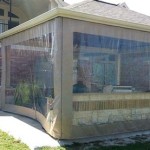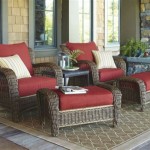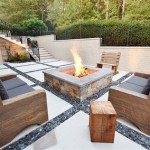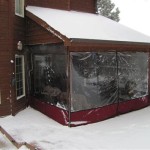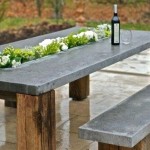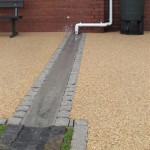Bringing Spanish Style To Your Patios And Homes
Spanish style, characterized by warmth, vibrancy, and a connection to nature, has captivated homeowners for centuries. Originating in Spain and heavily influenced by Moorish, Mediterranean, and Mexican architectural traditions, this style offers a distinctive aesthetic that can transform patios and homes into inviting and visually stunning spaces. The key to successfully incorporating Spanish style lies in understanding its core elements and applying them thoughtfully.
Achieving a Spanish-inspired design involves a careful blend of architectural features, color palettes, materials, and decorative accents. This approach allows for the creation of spaces that evoke the spirit of Spain, whether recreating the rustic charm of a farmhouse or the refined elegance of a hacienda. The result is a home and patio that are both beautiful and comfortable, ideal for both relaxation and entertaining.
Key Architectural Features of Spanish-Inspired Design
Spanish architecture features several distinctive elements that contribute to its unique character. These features, when appropriately implemented, can significantly impact the overall aesthetic of a space.
One prominent feature is the use of stucco walls. Stucco, a durable and versatile plaster-like material, provides a textured surface that is well-suited to warm climates. Its ability to be molded and shaped allows for the creation of rounded archways, curved walls, and other characteristic Spanish architectural details. In exterior spaces, stucco walls can define patio boundaries, create privacy screens, or serve as a backdrop for lush landscaping. Indoors, stucco walls impart a sense of warmth and texture to living spaces, kitchens, and bedrooms.
Red clay roof tiles are an iconic element of Spanish architecture. These tiles, known for their durability and heat-reflecting properties, provide a visually appealing roof covering that is both functional and aesthetically pleasing. While installing a completely new red clay tile roof may be extensive, incorporating red clay tile accents in other areas, such as patio flooring or decorative wall features, can provide a nod to this traditional element. Alternatively, concrete tiles designed to mimic the appearance of red clay can be a more cost-effective option.
Arched doorways and windows are another hallmark of Spanish design, adding a touch of elegance and visual interest. Arches can be incorporated into various areas of a home, including entryways, hallways, and patio entrances. The curved lines of arches soften the angularity of a space and create a sense of flow. Similarly, arched windows can enhance natural light and provide picturesque views. When constructing new openings or renovating existing ones, consider incorporating arched designs to capture the essence of Spanish architecture.
Courtyards and patios are integral to Spanish homes. These outdoor spaces are designed for relaxation, entertainment, and connection with nature. Patios are often enclosed by walls or fences, creating a private and sheltered area. The incorporation of water features, such as fountains or small pools, adds a soothing element. Courtyards frequently feature lush landscaping, including potted plants, climbing vines, and shade trees. These outdoor spaces serve as extensions of the living area and provide a tranquil retreat.
Color Palettes and Materials for Authenticity
Color selection plays a crucial role in creating a Spanish-inspired ambiance. Earthy tones, warm neutrals, and vibrant accents are characteristic of this style. The materials used in construction and装饰 must also complement this design.
The color palette for Spanish interiors and exteriors typically revolves around earthy tones. Warm whites, creams, beiges, and terracotta hues form the foundation of the color scheme. These neutral colors create a sense of warmth and provide a backdrop for more vibrant accent colors. Walls are often painted in a textured matte finish to enhance the rustic appeal. The choice of neutral colors does not mean a lack of personality but provides a canvas to build upon with other elements.
Accent colors, such as deep blues, vibrant yellows, and rich reds, are used to add pops of color and visual interest. These colors can be incorporated through textiles, artwork, and decorative accessories. For example, blue and white Talavera tiles can be used on kitchen backsplashes or bathroom walls to add a touch of Spanish flair. Red accents can be introduced through rugs, cushions, or painted furniture. These accent colors should be used strategically to create visual harmony and prevent the space from becoming overwhelming.
Natural materials are essential to achieving an authentic Spanish look. Wood, stone, and wrought iron are commonly used in construction and decoration. Wooden beams, either structural or decorative, add warmth and character to ceilings and living spaces. Stone flooring, such as travertine or slate, provides a durable and aesthetically pleasing surface for patios and interiors. Wrought iron can be used for window grilles, railings, and decorative accents. The texture and imperfections of these natural materials contribute to the rustic charm of the style.
Textiles play a significant role in adding color, texture, and pattern to a Spanish-inspired space. Woven rugs, embroidered cushions, and patterned curtains can enhance the overall aesthetic. Fabrics made from natural fibers, such as cotton, linen, and wool, are preferred. Intricate patterns, such as geometric designs or floral motifs, are often incorporated into textiles. These textiles can be used to soften hard surfaces, add visual interest, and create a cozy and inviting atmosphere.
Decorative Elements and Landscaping
The final touches in creating a Spanish-inspired space involve selecting the right decorative elements and landscaping features. These details can significantly contribute to the overall ambiance and authenticity of the design.
Talavera pottery, with its vibrant colors and intricate designs, is a characteristic element of Spanish decor. These hand-painted ceramics can be used to decorate walls, countertops, and outdoor spaces. Talavera tiles are often used in kitchen backsplashes, bathroom walls, and patio fountains. Talavera planters can be used to display potted plants, adding color and texture to the landscape. The unique patterns and vibrant colors of Talavera pottery add a touch of Spanish flair to any space.
Wrought iron accents are another important decorative element. Wrought iron chandeliers, sconces, and candleholders can provide ambient lighting and add a touch of elegance. Wrought iron furniture, such as chairs, tables, and benches, can be used to create comfortable and stylish outdoor seating areas. Wrought iron gates and fences can enhance security and privacy while adding a decorative element to the exterior of the home. The intricate designs and durable nature of wrought iron make it a versatile and aesthetically pleasing material.
Consider incorporating water features, such as fountains or small pools, to add a soothing and visually appealing element to patios and courtyards. Fountains can be constructed from stone, tile, or wrought iron, and they can be designed in various styles, from simple and rustic to elegant and ornate. The sound of running water creates a relaxing atmosphere and attracts birds and other wildlife. Small pools can be used for swimming or simply as a decorative element, adding a touch of luxury to the outdoor space.
Landscaping plays a crucial role in creating a Spanish-inspired outdoor space. Native plants, such as olive trees, citrus trees, and lavender, are well-suited to the climate and contribute to the overall aesthetic. Climbing vines, such as bougainvillea and jasmine, can be used to cover walls and fences, adding color and fragrance. Potted plants, such as geraniums and petunias, can be used to add pops of color to patios and courtyards. The use of drought-tolerant plants is particularly important in arid climates, helping to conserve water and maintain a sustainable landscape.
Choosing the right lighting is essential for creating the desired ambiance. Warm, ambient lighting is preferred to harsh, bright light. Wrought iron chandeliers and sconces can provide a soft, inviting glow. Lanterns and string lights can be used to illuminate patios and courtyards, creating a magical atmosphere. Candles can be used to add a romantic touch to dining areas and outdoor spaces. The goal is to create a lighting scheme that is both functional and aesthetically pleasing, enhancing the warmth and character of the Spanish-inspired space.

Spanish Style Water Wise Front And Back Yards Garden View Landscape Nursery Pools

Spanish Style Water Wise Front And Back Yards Garden View Landscape Nursery Pools

Spanish Style Home Beautiful Inspiration For Your Dream Architecturesstyle

Incorporating Spanish Interior Design Into Your Home Decor Designer Los Angeles

Spanish Style Home Custom Rustic Furniture Demejico

Spanish Style Water Wise Front And Back Yards Garden View Landscape Nursery Pools

4 House S For Spanish Style Home Decor Rustico Tile Stone

Spanish Sanctuary Backyard Plans Jenna Sue Design

Incorporating Spanish Interior Design Into Your Home Decor Designer Los Angeles

House Tour A Spanish Bungalow Makeover In Los Angeles Cot
Related Posts

